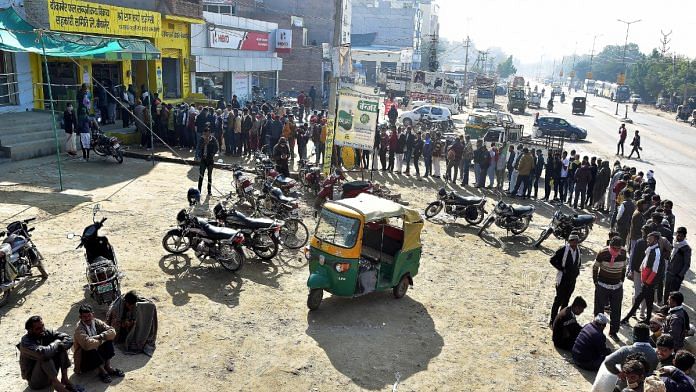New Delhi: The Russian invasion of Ukraine could hike India’s fertiliser subsidy bill by up to 60 per cent, ThePrint has learnt.
Initial estimates suggest that the subsidy bill, which was around Rs 1.25 lakh crore last year, could touch Rs 2 lakh crore this year, according to top sources in the Narendra Modi government.
The sources further said that in the international market, the price of urea has risen to Rs 3,700 per bag (around $49), while diammonium phosphate (DAP) has gone up to Rs 4,200 (approximately $56). However, a bag of urea continues to sell at Rs 266 in India, whereas a bag of DAP costs Rs 1,350.
“We are committed to keeping the prices stable, but international developments have made fertilisers very expensive. There is the matter of US sanctions on Iran and Iran’s status as a major DAP supplier, but the sanctions make procurement difficult. Now to add to that is the Russia situation, and the difficulty in procuring ammonia and gas from Russia for fertiliser production,” a senior government functionary told ThePrint.
“There are many other things that are happening. China at one point used to export fertilisers but has now started importing. Not just us, the entire world is paying more for fertilisers. We are expecting the subsidy bill to move up significantly, maybe reach Rs 2 lakh crore from last year’s Rs 1.25 lakh crore,” the functionary added.
While there have been reports of fertiliser shortage in the country for the past several months, the Centre has denied this on multiple occasions. A senior government official told ThePrint, “There is no shortage. What happens is that villages need fertilisers when there is rain and all of them need it at the same time. So,the entire village turns up one fine morning to buy fertilisers, and obviously there are queues. The media see the queues and say there is a shortage when there is none.”
Also Read: Modi govt slashes food & fertiliser subsidies, pushes agriculture’s allied sectors in Budget
‘Prepared for Kharif season’
Although the demand for fertiliser to be used in sowing crops during the Kharif season will kick in only from May, sources said that the government has already procured an initial stock of about 30 lakh metric tonnes of DAP and 70 lakh metric tonnes of urea for the season.
More will be procured in the coming days, an official told ThePrint.
During the Kharif season, the usual demand is around 80-85 lakh metric tonnes of fertiliser, but this year, it is expected to go even higher, the official further said.
“Several urea plants are coming up. We will be self-sustaining in urea in three years,” the official added.
The Union Ministry of Chemicals and Fertilisers has started the process of reviving five fertiliser plants — Hindustan Urvarak Rasayan Limited’s (HURL) plants in Gorakhpur (Uttar Pradesh), Barauni (Bihar) and Sindri (Jharkhand), Ramagundam Fertilizers and Chemicals Limited (RFCL) in Ramagundam (Telangana), and Talcher Fertilizers Limited (TFL) in Angul (Odisha).
(Edited by Gitanjali Das)
Also Read: Low reservoir levels coupled with depletion of fertiliser stocks threaten rabi season sowing



